Survival Stories
Surviving Double Avalanches: Skier’s Miraculous Tale
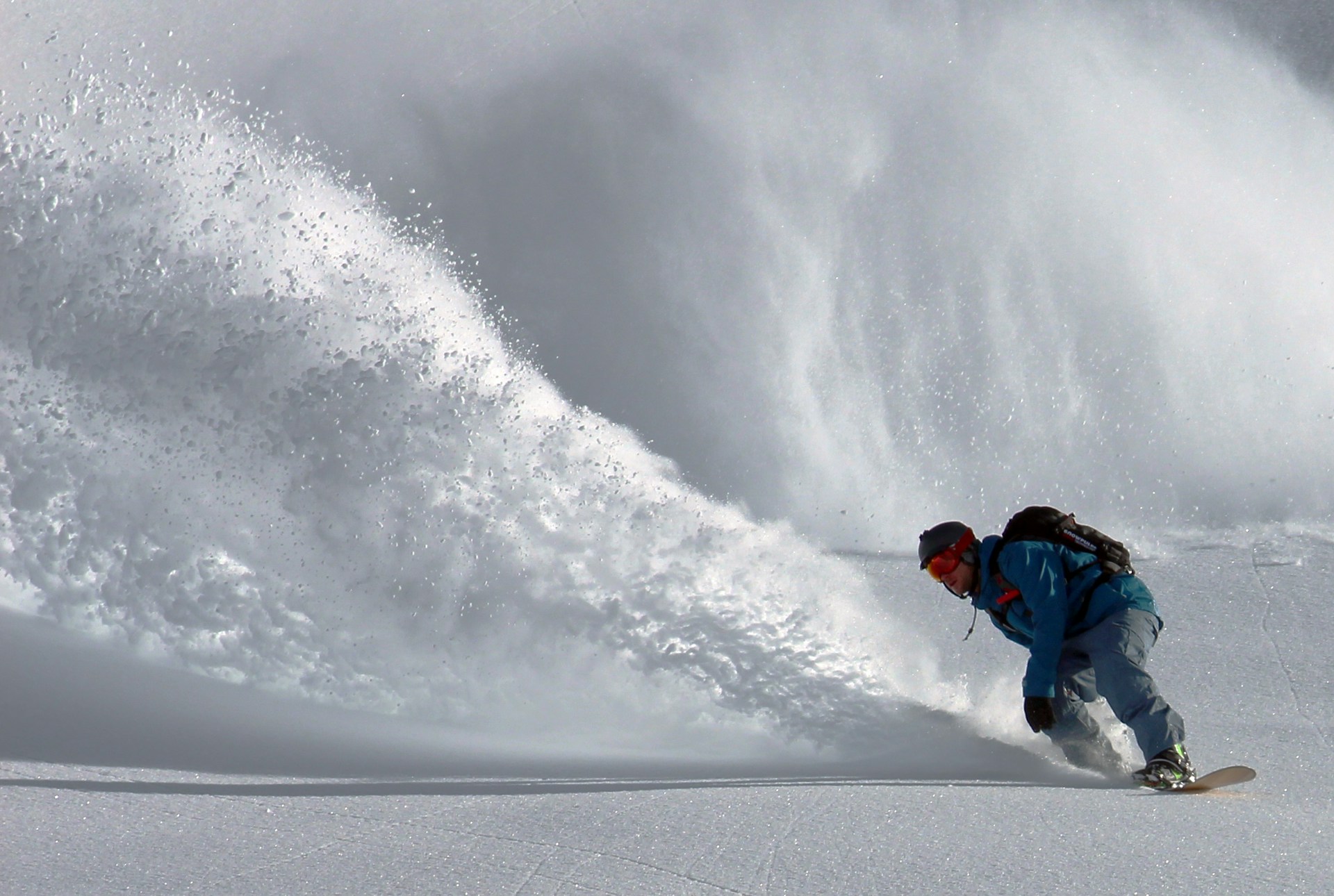
Ken Scott, a seasoned skier and ski industry veteran, woke up to an exciting day in the Rocky Mountain town of Mullan, Idaho, on January 7, 2020. The local radio station announced that the nearby Silver Mountain Resort was blanketed with almost a foot and a half of fresh snow. As an avid skier who spent over 100 days a year on the slopes, Scott couldn’t resist the lure of this fresh powder.
His wife, Ruth, also an enthusiastic skier, had other plans that day, so Scott set off alone. Upon arriving at Silver Mountain, he ran into his friend and former ski instructor, Rebecca Hurlen-Patano. The two friends were thrilled at the prospect of skiing in the fresh snow.
“Can you believe it?” she said as they changed into their boots. “Sixteen inches! Are you ready?”
Scott and Hurlen-Patano spent the next hour carving fresh tracks on various runs under a lightly overcast sky. During their ski lift ride, they noticed that the 6,200-foot Wardner Peak, home to the challenging expert-level trail named 16-to-1, was now open. The trail had been closed all season due to avalanche concerns, but that morning, patrols had set off 13 explosive charges to clear loose snow from its upper slopes.
The pair, along with other regulars at Silver Mountain, were excited to be the first to ski the steep, powder-rich run this season. Upon reaching the slope’s crest, Hurlen-Patano looked back at Scott, her excitement mirrored in his wide grin. She pointed her skis downhill and took off.
Almost immediately, the snow beneath her gave way. “Avalanche!” she yelled to Scott, who was not far behind.
He responded, fear in his voice, “This is happening!”
In an instant, both were swept downhill by heavy slabs of snow, carrying them some 500 feet down the mountain. Hurlen-Patano felt the snow engulf her, while Scott was tumbled around like clothes in a dryer.
When he finally came to rest, he was almost completely buried, but he could see daylight and move his right hand and forearm. He cleared snow from his face and told himself, “It’s a shallow burial. I can breathe. I am alive. Stay composed.”
Hurlen-Patano managed to pull herself out of the snow and began calling out for Scott and their fellow skiers. Scott, though unable to move much, felt confident that he could survive. He cleared a breathing space above his face and focused on staying calm.
Suddenly, the air around Hurlen-Patano exploded with the sound of a second avalanche. This one was much bigger, and she was once again buried in the snow. When she managed to free herself, she realized that the landscape had been completely transformed, and there were no signs of Scott or the other skiers.
Scott, hearing the roar of the second avalanche, thought he was doomed. The snow was so heavy that he couldn’t move anything but his eyelids and toes. He was completely immobile, and the breathing space he’d cleared was gone. He knew his chances of survival were slim, but he tried to stay calm and focus on his breathing.
Hurlen-Patano called for help, and soon Silver Mountain’s patrols and skiers were heading to the avalanche site with shovels and ten-foot poles. She directed the rescuers to where she thought her friends were buried.
Scott, trapped in the snow, felt a slight pressure on his right hip. He hoped it was a rescue probe, but after a few minutes, the pressure was gone. He felt himself fading away.
Suddenly, he felt a vibration and the sound of shovels hitting snow. He started shouting, hoping that anyone standing above would hear. After five minutes, rescuers dug through the snow and uncovered Scott’s face. He took in deep breaths of fresh air and saw the smiling faces of his rescuers.
He had survived two avalanches.
As his arms were freed, he spotted Hurlen-Patano among his rescuers and pulled her down on top of him. “I can’t let go,” he said, still hugging her.
While Ken Scott, Bill Fuzak, and Warren Kays survived, three others, including Carl Humphreys, lost their lives. Scott and Hurlen-Patano have since received counseling for post-traumatic stress syndrome. Despite the traumatic experience, Scott’s love for skiing remained undiminished, and he was back on Silver Mountain just nine days after his rescue.
Our Thoughts
This riveting account of Ken Scott’s survival against two avalanches is a stark reminder of the unpredictability of nature and the importance of preparedness. As a seasoned skier, Scott’s experience, presence of mind, and resilience played a significant role in his survival.
However, the unfortunate loss of three lives underlines the inherent risks associated with extreme sports and outdoor activities. It’s a reminder that while the thrill of fresh powder may be irresistible, safety should always be paramount.
The incident also highlights the importance of community and teamwork in the face of adversity. Hurlen-Patano’s quick thinking to call for help and guide rescuers, coupled with the swift response of the Silver Mountain team, were crucial in the rescue efforts.
Scott’s return to the slopes just nine days after the incident is testament to his indomitable spirit and love for skiing. His story is a powerful reminder that while we must respect the might of nature, we should not let fear hinder our passions.
Let us know what you think, please share your thoughts in the comments below.

Survival Stories
Unseen Advantage: Law Enforcement’s Rapid Adoption of Optics

In the world of law enforcement and survival, the ability to quickly and accurately assess a situation can make all the difference. This is why the rapid adoption of optics by law enforcement agencies is hardly surprising. These tools provide a wealth of visual information, aiding in making more informed decisions. A key factor in the selection of these optics is the window size, but it seems that co-witness sights, which can sometimes occupy half of the entire optic window, often don’t receive the attention they deserve.
“Without question, the speed with which LE agencies have adopted optics is testament to the advantage they offer: more visual information that yields better decisions.”
Interestingly, suppressor height sights are frequently paired with optics. To comprehend why this particular sight remains a popular choice when selecting co-witnessing sights, we must journey back in time. Around 2009, shooters, both professional and non-professional, began to repurpose a solution initially designed for Close Quarters Battle (CQB) rifle work for use on pistols.
The Trijicon RMR, a compact electronic optic, was a welcome alternative to the larger optics typically seen on competition pistols. Its smaller size offered more holster options, less likelihood of snagging in the field, and a more robust window and housing. As a result, it addressed many of the issues raised by professional users, leading to a shift towards an optics sighting solution within the firearms community.
“The smaller footprint meant more holster options, less to get caught on while in the field, and a less delicate window and housing.”
This shift was spearheaded by individuals in the military, law enforcement, defensive firearms instruction, and competition professionals. With the introduction of these optics, performance improved, and new shooters were able to develop accuracy and speed more quickly. The instinctual focal plane response to stress, which previously had to be trained out, could now be utilized as an asset by Firearms Instructors working with students who had optics on their pistols.
“Performance increased, accuracy and speed developed sooner with new shooters, the intuitive and instinctual focal plane response to stress no longer needed to be trained out—and instead, the threat-focus could now be an asset used by Firearms Instructors working with students who had optics on their pistols.”
As the popularity of optics grew, the aftermarket and firearms manufacturers responded by supporting this “new” sighting system. However, one critical component of the system was often overlooked: the back-up sights. This oversight highlights the need for a comprehensive approach to firearm optics, one that considers all elements of the sighting system to ensure optimal performance and safety.
Our Thoughts
The adoption of optics in law enforcement is a testament to the technology’s effectiveness. It’s no surprise that tools that enhance visual information, thus enabling better decision-making, have become a staple in the arsenal of law enforcement agencies.
The rise of the Trijicon RMR is particularly noteworthy. Its compact size and robust design addressed many of the practical concerns of professional users, leading to a broader acceptance of optics as a sighting solution.
The benefits of these optics extend beyond their practicality. They have brought about a shift in the training of new shooters, turning the instinctual focal plane response to stress into an asset rather than a hurdle to overcome. This has undoubtedly contributed to the improved performance observed among new shooters.
However, the focus on the main optic often results in the neglect of back-up sights. This is a reminder that a comprehensive approach to firearm optics is necessary to ensure optimal performance and safety. After all, a tool is only as good as the system supporting it.
Let us know what you think, please share your thoughts in the comments below.
Survival Stories
Mental Resilience: The Overlooked Key to Survival Success
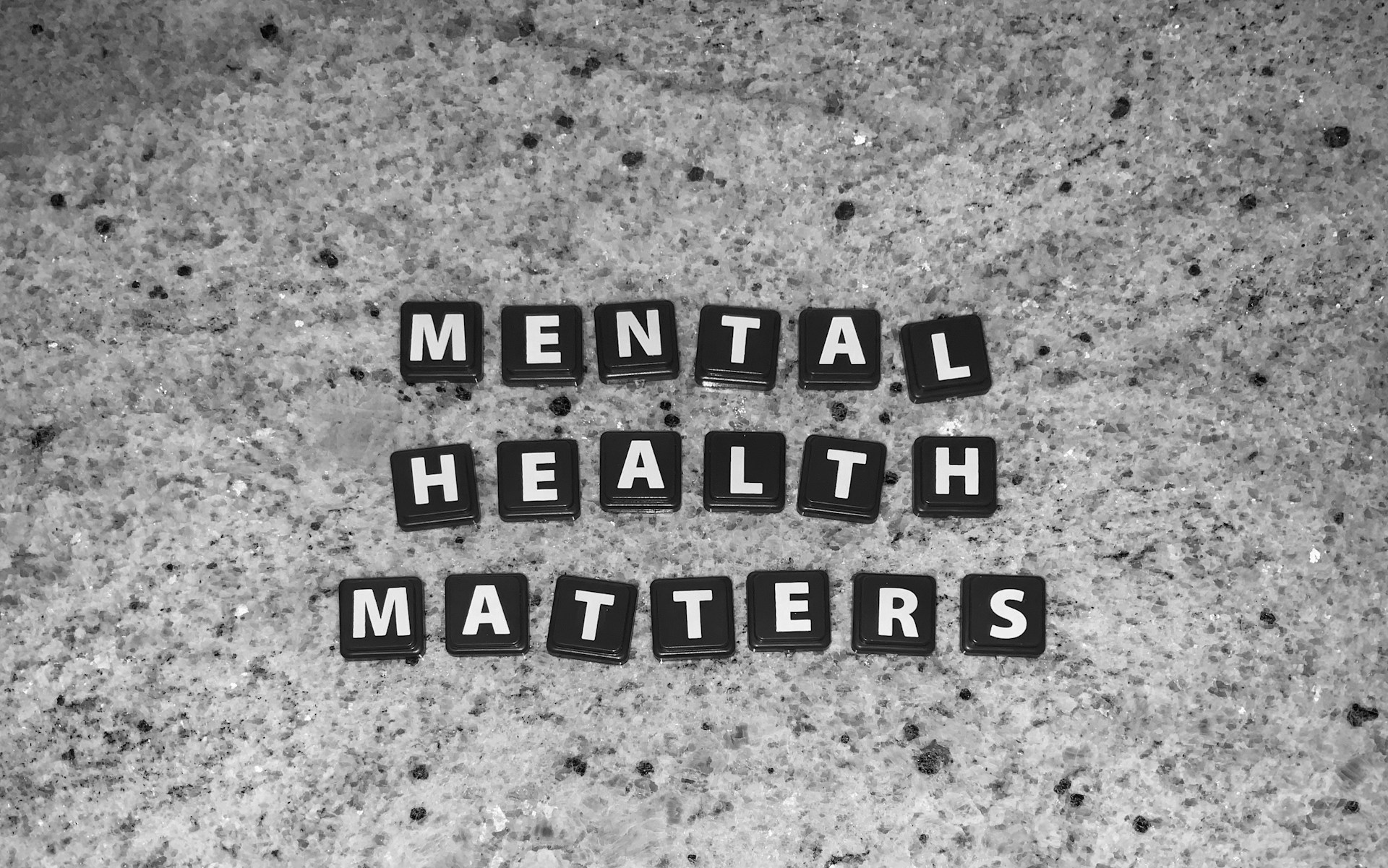
In the realm of survival, we often focus on the physical aspects: the gear, the skills, the terrain. Yet, one crucial element often overlooked is our mental health. As a seasoned survivalist and a licensed mental health therapist, I’ve experienced firsthand the importance of mental resilience in a crisis.
I recall an incident during my first exploration of Red Rock Canyon. The vast, humbling landscape was a sight to behold, but it was also a formidable challenge. Despite my preparations, I found myself lost on a wild game trail, far from the intended path.
“Okay, no big deal,” I reassured myself. “I’ll just retrace my steps.”
But the creeping sense of panic was undeniable. I was low on water, surrounded by thick brush, and far from any signal. It was in this moment that my mental health training became as crucial as my survival skills.
“If anyone can figure this out, I can.” I thought. Or rather, tried to convince myself….
The human brain has a built-in survival mechanism known as the fight-flight-freeze response. When faced with danger, our heart rate increases, our pupils dilate, and our breathing becomes rapid. While these physiological changes can enhance our strength and speed, they can also lead to panic attacks, which can be detrimental in a survival scenario.
Soldiers and first responders are trained to manage this response, and so can civilians. Understanding mental health first aid can be a lifesaver in personal emergencies or when trying to calm someone else in a crisis.
“Okay…” I thought, “let’s just backtrack a little. See if I can’t find the main trail.”
I remembered the acronym S.T.O.P., taught in wilderness survival classes: Sit, Think, Observe, Plan. I sat down, focused on my breathing, and began to regain control of my racing thoughts.
“Breathe.” I thought. “In through the nose, slow. SLOW. Hold it for a few seconds. Now release through the mouth even slower. Pause. Repeat.”
I knew I had to control my thoughts to improve my feelings and make good decisions. Catastrophic thinking like “I’m gonna die” or “What if a rattlesnake bites me?” could trigger panic mode.
“Okay, what do we know?” I thought. “I know I can’t be too far off-course, no more than a couple miles. I know a few people knew generally where I was going (but not the specific trailhead) and that I expected to be back by nightfall. I know I have survival training and some kit with me that would help me make it through the night if needed. I can do this.”
After observing my surroundings and assessing my resources, I made a plan. I decided to head in the direction of what I believed to be a road, using a large branch to tap the ground in front of me to ward off any potential rattlesnakes.
In the end, I made it back to my vehicle without having to spend the night in the desert. The experience was a stark reminder of the importance of mental health in survival situations.
In the aftermath of a crisis, people will be in panic mode. Knowing how to guide someone through the stresses of a crisis can help mitigate some of the negative effects of traumatic events.
First, ensure the scene is safe. Then, assess the group, find helpers, and triage the situation. Ground the person by asking them to describe their surroundings and their feelings. Encourage slow, deliberate breathing and validate their experiences.
Long-term effects of repeated activation of the fight-flight-freeze response can include panic attacks, nightmares, and flashbacks. If you’re prone to these symptoms and find the techniques described here aren’t helping, consider seeking help from a licensed therapist.
Remember, it’s not a matter of being weak or strong. Some of the bravest individuals I’ve worked with have sought therapy for their symptoms. It takes great strength and bravery to ask for help.
Since my experience in Red Rock Canyon, I’ve incorporated mental health first aid and awareness into my survival teachings. I’ve also adjusted my approach to hiking, ensuring I communicate my exact route and expected return time, carry more water, and stay focused on the trail.
Survival isn’t just about the physical. It’s about the mental too. And with the right skills and mindset, we can navigate any crisis with resilience.
Our Thoughts
This compelling account underscores the often overlooked but critical role mental health plays in survival scenarios. The author’s experience in Red Rock Canyon drives home the importance of not just physical preparation, but mental preparedness as well.
The fight-flight-freeze response, while instinctual, can be detrimental if not properly managed. As survivalists, we should heed the author’s advice and learn to control this response, much like soldiers and first responders are trained to do.
The S.T.O.P. method is a useful tool in regaining control of our thoughts and feelings in high-stress situations. It’s not just about physical survival skills, it’s about mental resilience and clarity of thought.
Moreover, the importance of understanding mental health first aid cannot be overstated. It can be a lifesaver, not just for ourselves, but for others in crisis.
Ultimately, the author’s story is a reminder that survival isn’t just about the gear, the terrain, or the skills — it’s about the mind too. And in the face of adversity, with the right mindset, we can navigate through any crisis with resilience.
Let us know what you think, please share your thoughts in the comments below.
Survival Stories
Survival Essentials: Choosing and Mastering Your Firearm for the Wilderness

In the world of survival, the value of a reliable and accurate firearm cannot be overstated. Bradford Angier, a respected voice in the survival community and author of “How to Survive in the Woods,” once stated, “The best survival weapon, it follows, is a flat and hard shooting rifle. There is no need to append that it should be rugged, accurate, and durable.” This statement, penned in 1969, remains as true today as it was then.
In Angier’s era, the leading .22 rifles included the Armalite AR-7, Marlin model 60, Ruger 10/22, and Remington Model 66. Despite some of these models no longer being in production, they remain among the best survival firearms available today, and can often be found in excellent condition on used gun racks.
Angier’s writings also sparked a debate that continues to this day: if you could only have one gun, should it be a .22 for taking small game and allowing you to carry more ammo, or a larger centerfire rifle capable of taking down a larger animal for more substantial rations? This question remains a popular topic of discussion among survivalists.
Since Angier’s time, survival rifles have gained popularity, with many companies now offering models with features such as take-down capabilities, synthetic furniture, and adjustable stocks. The COVID pandemic and resulting meat shortages have also led to a surge in firearm ownership, as people consider the possibility of hunting their own food if supermarkets can’t provide.
However, owning a survival rifle is only part of the equation. Knowing how to use it effectively is equally, if not more, important. This includes understanding the fundamentals of marksmanship and knowing how to adapt to different shooting positions.
In the early 20th century, the three primary shooting positions were standing, kneeling, and prone. These positions offer varying degrees of stability, with prone being the most stable but also the most time-consuming to get into. More likely, shots will be taken while standing, sitting, or kneeling with the rifle supported against a tree or other object.
Training with a .22 rifle can be an effective way to practice these positions and make adjustments to your shooting technique. The recoil of a .22 is much less jarring than that of a larger centerfire rifle, making it a more comfortable option for sustained practice.
Each shooting position has its own advantages and trade-offs. For example, the prone position offers great stability but takes time to get into and can be uncomfortable in cold weather. The standing position is quick and allows for easy reloading but is less stable. In a survival situation, you may need to use variations of these positions, or even shoot from your non-dominant side.
Training should mimic real-world scenarios as closely as possible. This means using available objects for increased stability, such as a backpack or tree branch, and adjusting the size of your target as you move from more stable to less stable positions.
Training with a .22 rifle can also be a cost-effective way to improve your marksmanship. The cost of ammunition has risen significantly in recent years, making it more expensive to practice with larger centerfire rifles. The fundamentals learned with a .22 can later be applied to centerfire ammunition.
A survival rifle is a valuable tool for any survivalist, but knowing how to use it effectively is crucial. This includes understanding the fundamentals of marksmanship, being able to adapt to different shooting positions, and training in a way that mimics real-world scenarios. As Bradford Angier once said, the best survival weapon is a flat and hard shooting rifle, but it’s also important that it be rugged, accurate, and durable.
Our Thoughts
Bradford Angier’s wisdom about the value of a reliable, accurate firearm in survival scenarios still rings true. In today’s world, the importance of firearm adaptability, durability and accuracy is even more pronounced, given the uncertainties that we face.
The debate on whether to choose a .22 rifle for small game and larger ammo capacity or a centerfire rifle for larger game and substantial rations is a testament to the diversity of survival scenarios. This highlights the need for individuals to understand their specific survival needs and equip themselves accordingly.
The advancements in survival rifles, from take-down capabilities to adjustable stocks, demonstrate the evolution in survival gear. This evolution is driven by the need for versatility and adaptability in survival situations. The surge in firearm ownership due to the COVID pandemic also underscores the importance of self-reliance in uncertain times.
However, owning a firearm is just one part of the equation. The mastery of different shooting positions, understanding of marksmanship fundamentals, and the ability to adapt are key to survival. Training with a .22 rifle is an effective and cost-efficient way to hone these skills.
In conclusion, survival is about more than just having the right tools. It’s about the knowledge and skills to use them effectively. As survivalists, we must continue to adapt, learn and prepare for the unexpected.
Let us know what you think, please share your thoughts in the comments below.
-

 Preparedness4 months ago
Preparedness4 months agoEx-Ballerina’s Guilty Verdict Sends Tremors Through Gun-Owner Community
-
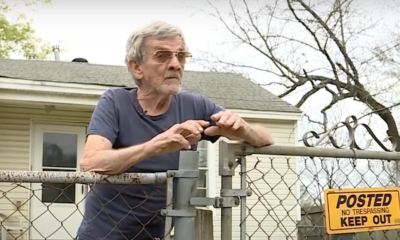
 Tactical7 months ago
Tactical7 months ago70-Year-Old Fends Off Intruder with Lead-Powered Message
-
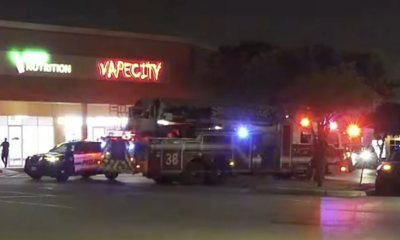
 Tactical7 months ago
Tactical7 months agoVape Shop Employee Confronts Armed Crooks, Sends Them Running
-

 Preparedness2 months ago
Preparedness2 months agoGood Samaritan Saves Trooper in Harrowing Interstate Confrontation
-

 Survival Stories1 year ago
Survival Stories1 year agoEmily’s 30-Day Experience of Being Stranded on a Desert Island
-
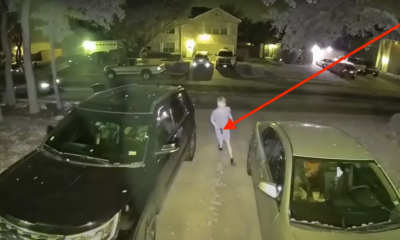
 Tactical7 months ago
Tactical7 months agoMidnight SUV Theft Interrupted by Armed Homeowner’s Retaliation
-

 Preparedness2 months ago
Preparedness2 months agoArizona Engineer’s Headless Body Found in Desert: Friend Charged
-

 Preparedness2 months ago
Preparedness2 months agoBoy Saves Dad from Bear Attack with One Perfect Shot